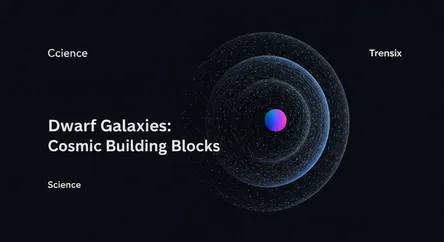Science
Dwarf Galaxies: Cosmic Building Blocks

Explore dwarf galaxies, the small, dim star systems that are key to understanding dark matter, cosmic evolution, and the formation of larger galaxies.
What is it?
A dwarf galaxy is a small, faint galaxy composed of anywhere from a few thousand to several billion stars. In contrast, our own Milky Way galaxy contains hundreds of billions of stars. As the most numerous type of galaxy in the universe, they are often found as companions, orbiting larger galaxies like our own. Their low luminosity and small size make them incredibly difficult to detect, but they are considered fundamental building blocks of the cosmos, remnants from the early universe that have since merged to form the giant galaxies we see today.
Why is it trending?
Dwarf galaxies are at the forefront of astronomical research because they are thought to be dominated by dark matter. Their stellar motions cannot be explained by their visible mass alone, making them perfect natural laboratories for studying the properties of this mysterious, invisible substance. Advanced telescopes like the James Webb Space Telescope (JWST) are now able to resolve individual stars within them, providing unprecedented data on the universe's first galaxies and the processes of star formation in unique, metal-poor environments.
How does it affect people?
While dwarf galaxies have no direct physical impact on daily life, their study is crucial to answering some of humanity's biggest questions. Understanding them helps us piece together the history of the universe and how our own Milky Way was formed. By studying their dark matter content, scientists get closer to unraveling one of the greatest mysteries in physics, which could fundamentally alter our understanding of gravity and the cosmos. This pursuit of knowledge expands our perspective on our place in the universe and drives technological innovation.